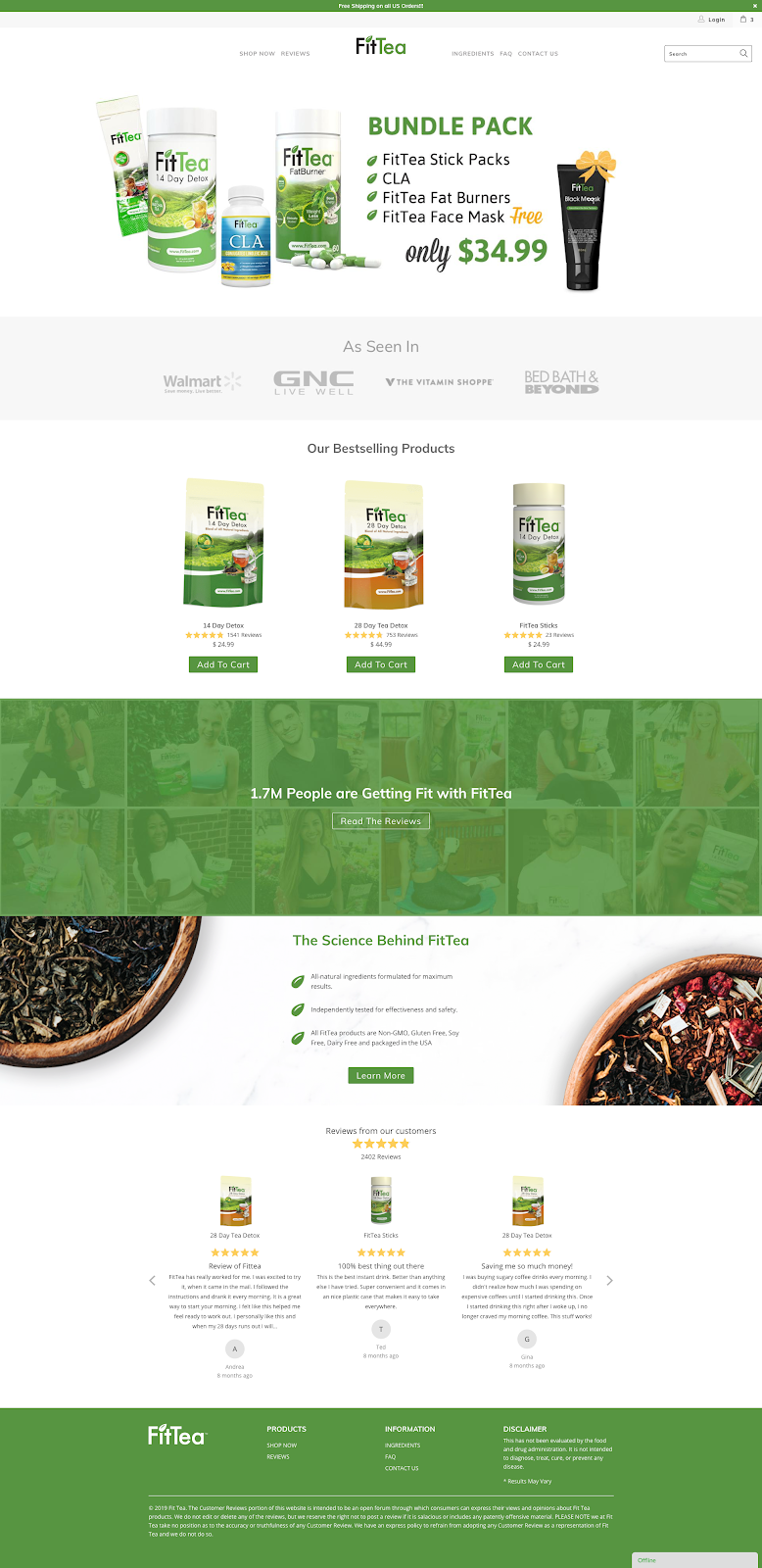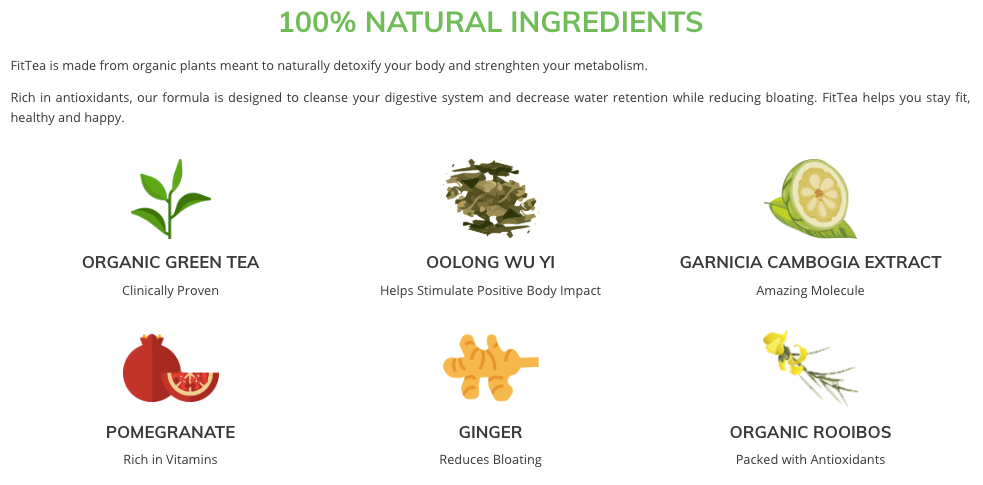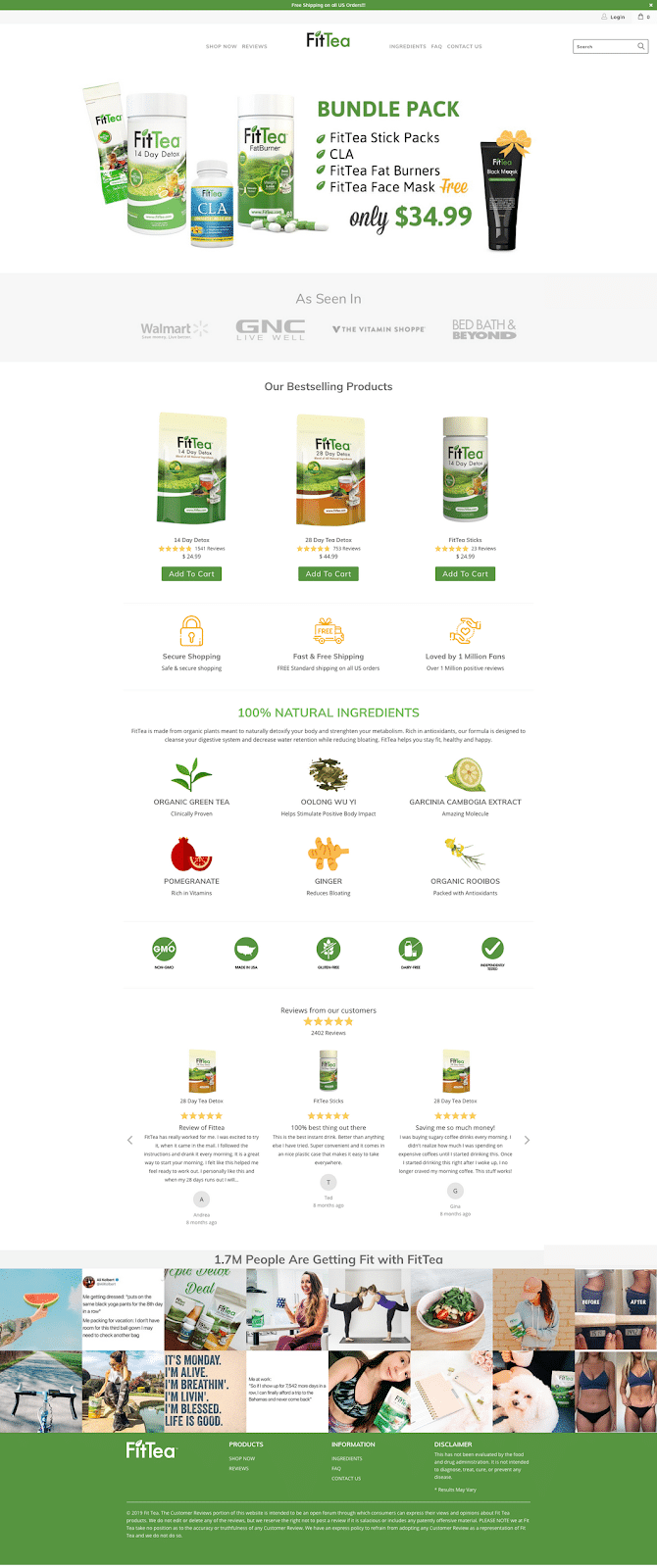A/B Testing Trust Elements on E-commerce Stores – A CRO Case Study
In this article we’ll share a CRO case study based on an A/B test we ran for a tea company, the #1 selling detox tea in the world, with over 1 Million customers around the world.
The context
The brand has grown massively in popularity since its launch in 2013. Through the use of strong marketing campaigns and influencer marketing, they have reached over 1.7 million customers and the numbers keep growing. The brand could also benefit from including CRO in the marketing mix, and this is where we came into the picture.
Conversion rate optimization is a great way of turning visitors into customers. You can drive more sales by creating a smooth user experience, addressing user anxiety and helping visitors overcome any barriers they may be facing when it comes to spending money on your website.
Understanding the conversion rate optimization process
Conversion rate is the bread and butter of every e-commerce store. Therefore, when aiming to increase sales, the first thing CRO specialists do is take a closer look at the website and analyze user behaviour.
The goal is to identify drop off points and issues that are preventing visitors from converting at a higher rate. Once you identify and isolate the areas that need optimization, you start working on them, hoping to bring lifts in the conversion rate. ‘Hoping’ is the right word here, because no one can guarantee the success of an experiment. You can do your research really well and go into A/B testing fully prepared from this point of view, but more often than not, reality takes you by surprise.
A/B testing is basically trial and error, but that’s fine, because you are able to gain valuable insights from each experiment, be it a winner or not, and this also applies to the experiment that makes the subject of today’s case study. After all, if we knew from the start what works and what doesn’t, we wouldn’t be testing in the first place, would we?
The A/B Test
From quantitative research we learned that the homepage was one of the most important landing pages on the website, having received a significant amount of traffic throughout the past months. And, without a doubt, it needed optimization.
Upon a heuristic analysis, we’ve concluded that the homepage was lacking elements that could stimulate users to buy, as well as elements that would reinforce trust. The original homepage included: a promo banner, a media bar, a product section, a few words about the products, and customer reviews (see screenshot below).

So, what did our experiment consist of? First of all, we felt that the homepage didn’t bring forward any benefits to the user. In other words, why should visitors buy from this particular store, and not from its competitors? To stimulate their buying desire, we’ve added a benefits bar. We believed these attributes would help build trust with potential customers, making them feel safe and motivated enough to place an order on this website.

Secondly, we believed we should insist on the composition of the products. They are all made of 100% natural ingredients, so why not emphasize this? As a consequence, we’ve also included an ‘ingredients’ section that would speak to the products’ organic nature, thus making them safe to be consumed and beneficial to the human body.

On the same note, we’ve also included another product benefits bar. This one was already featured on the website, but it was located on a less visible page that didn’t record as many page views as the homepage.

Last but not least, we’ve added an Instagram section containing posts of people who have tried the product. We did this because we knew the brand became famous on Instagram, so it was only natural to include it in the website as well.

I guess you could say that our A/B test was in itself a full homepage redesign. By enriching the homepage with additional trust elements designed to reinforce brand credibility and stimulate users to buy, we’ve obtained a positive result and managed to significantly increase the CR.
The A/B test brought a 39.34% lift in purchase conversion rate with 95% statistical confidence
This goes to show that building trust with customers is truly important and it should be amongst your priorities as an e-commerce store owner. Experimenting with trust elements is definitely worth it, so we encourage you to try it out and share your findings with us!


Need help with your A/B testing? Shoot us an email at [email protected] and let’s talk!
